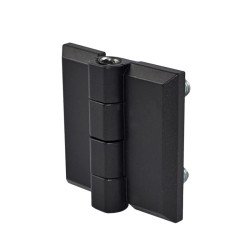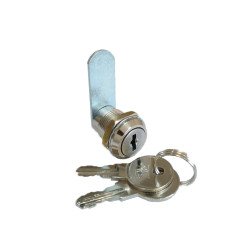Hardware materials for electric enclosures and switchgears
Created Date: 21 Mar

For electric enclosures and switchgears, selecting the right hardware is crucial for ensuring safety, functionality, and durability. Here’s a comprehensive list of hardware components commonly used for these applications:
✅ 1. Locks and Latches
- Cam Locks: Provide secure access to electrical panels, often with key or tool-operated options.
- Quarter Turn Latches: Quick and reliable access with compression models available for better sealing.
- Multipoint Latching Systems: Offer enhanced security and better sealing for larger enclosures.
- Keyed or Padlockable Latches: Add an extra layer of security for sensitive electrical installations.
✅ 2. Hinges
- Concealed Hinges: Maintain a clean aesthetic and prevent tampering.
- Lift-Off Hinges: Allow doors to be easily removed for maintenance.
- Stainless Steel or Zinc Hinges: Provide corrosion resistance for outdoor or industrial environments.
- Pin Hinges: Ideal for medium to large enclosures, supporting heavier doors.
✅ 3. Handles
- T-Handles and L-Handles: Common for switchgear enclosures, often with lockable options.
- Flush Handles: Maintain a low profile for space efficiency and safety.
- Swing Handles: Provide ergonomic access with optional locking mechanisms.
✅ 4. Sealing Solutions
- Gaskets (EPDM or Silicone): Ensure IP-rated protection against dust, water, and other contaminants.
- Compression Seals: Provide additional sealing to prevent ingress in extreme environments.
- Door Sealing Profiles: Protect internal components in both indoor and outdoor applications.
✅ 5. Fasteners and Mounting Hardware
- Stainless Steel Screws and Rivets: Ensure durability and resistance to corrosion.
- Threaded Inserts and Captive Screws: Offer secure and reusable fastening.
- Mounting Brackets and Support Frames: Provide structural integrity for larger enclosures.
✅ 6. Ventilation and Climate Control
- Ventilation Grilles and Filters: Prevent overheating by allowing airflow.
- Fan and Filter Units: Ensure proper ventilation for electrical systems.
- Heaters and Thermostats: Prevent condensation and maintain optimal operating temperature.
✅ 7. Cable Management
- Cable Glands: Seal cable entry points, ensuring IP-rated protection.
- Cable Clamps and Trays: Keep wiring organized and secure.
- Conduit and Cable Ties: Protect and route cables safely.
✅ 8. Grounding and Bonding
- Grounding Bars: Ensure effective grounding of the electrical system.
- Bonding Jumpers: Provide additional grounding for metallic enclosures.
✅ 9. Accessories
- Inspection Windows: Allow viewing of internal components without opening the enclosure.
- Nameplates and Labels: Provide clear identification of circuits and controls.
- Internal Lighting: LED or fluorescent lights for visibility during maintenance.
Final Considerations When Choosing Hardware for Electric Enclosures and Switchgears
- Environmental Conditions: Use corrosion-resistant hardware for outdoor installations.
- IP and NEMA Ratings: Ensure hardware maintains the required protection level.
- Security Needs: Choose tamper-proof locks and latches for sensitive applications.
- Ease of Maintenance: Select lift-off hinges and accessible handles for easier access.
https://www.linkedin.com/pulse/hardware-electric-enclosures-switchgears-andriy-alyeksyeyev-r3c7e














